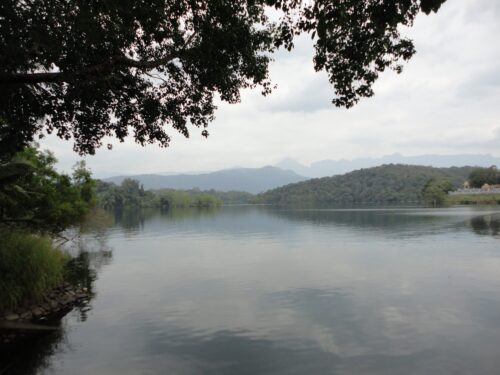(Author: Kurian, green economy enthusiast)
Over the years, deteriorated water level, quality of air and the environmental challenges are the result of climate change. This deterioration has taken a toll on food production, health of people and quality of life.
Fascinatingly, a 16 years old, 700 page report has forecasted it before hand. The report titled The Stern Review estimated that “the overall costs and risks of climate change will be equivalent to losing at least 5% of global GDP each year, now and forever. If a wider range of risks and impacts is taken into account, the estimates of damage could rise to 20% of GDP or more”.

A report which was commissioned by the UK government and led by economist Nicholas Stern, analyzed the effects of climate change on the economy and the benefits of controlled emission way back to the year 2006.
So, where are we now?
In 2021, Swiss Re institute’s research reported that “the world stands to lose close to 10% of total economic value by mid-century if climate change stays on the currently-anticipated trajectory, and the Paris Agreement and 2050 net-zero emissions targets are not met”.
Interestingly, this report not only suggested the economic benefit of arresting carbon emission. The report calculated “the costs of action – reducing greenhouse gas emissions to avoid the worst impacts of climate change – can be limited to around 1% of global GDP each year”.
Even though we had a report that forecasted the cost and risk from climate change to an economy, yet delay inaction is costing us much more.
With more and more research stating the correlation between human-induced climate change and extreme climate events like heat waves, heavy precipitation, droughts, and tropical cyclones, the need for action is justified.
On January 18, 2022, Indonesia hit the news as they approved the bill to move its capital from Jakarta to a yet-to-be-built city in Kalimantan. This “moving of the capital” is at the cost of 466 trillion rupiah ($32.7bn). The reasons for moving the capital include land subsidence, poor air quality and potential high waves and sea water increase due to climate change.
In 2020, India is also experienced one of the 10 most “expensive” extreme climate events the world saw – the super cyclone,Amphan, which damaged the worth of 14 billion US dollars.
Overseas Development Institute’s literature review for the year 2021 reported a “prediction that climate change could reduce India’s GDP by around 2.6% by 2100 even if the global temperature increase is held below 2°C; however, this rises by up to 13.4% in a 4°C scenario”.
This list can go on and on. The facts and climate incidents are alarming and impact India in significant ways. Regulators, businesses, investors and insurers are in concern due to increasing risk and impacts of climate change.
The climate economic risks involve physical and transition risks. According to a research titled Climate Risk and Response, the five physical systems that are affected by climate change are livability and workability, food systems, physical assets, infrastructure services and natural capital.
For instance, floods in Kerala caused “damage to infrastructure assets and the local crop or plantations”. This in turn badly affected tourism and agro-based industries says a report titled Floods to have a significant Impact on the Kerala Economy. Flooding in Kerala is an example of physical risks.

A report titled Climate change: what are the risks to financial stability? explains “transition risks can occur when moving towards a less polluting, greener economy. Such transitions could mean that some sectors of the economy face big shifts in asset values or higher costs of doing business”. When energy companies are asked to shift from carbon intensive industries to low carbon energy, this transition will involve cost. That is transitional risk.
Even though all the economies will be affected by climate change, some will be affected more. As per Swiss Re institute report, Malaysia, Thailand, India, the Philippines and Indonesia are most vulnerable. Advanced economies in the northern hemisphere, including the US, Canada, Switzerland and Germany are the least vulnerable.
What is the next course of action?
“Tackling climate change is the pro-growth strategy for the longer term, and it can be done in a way that does not cap the aspirations for growth of rich or poor countries” says the Stern review.
The report titled Climate Change 2021 by IPCC says that reducing cumulative CO2 emissions and other greenhouse gasses to a specific level will definitely help in limiting human-induced global warming. The report also adds the need for strong, rapid and sustained reductions in CH4 emission, limiting the warming effect resulting from declining aerosol pollution and would improve air quality. Another technique suggested by the report is the Anthropogenic CO2 removal(CDR). CDR or also known as negative emissions, or carbon drawdown is a method by which carbon dioxide is permanently removed from the atmosphere and stored underground or under the ocean floor. This way the primary human source of climate change is addressed. This method helps in lowering the atmospheric CO2 concentration and reverse surface ocean acidification.

The need for cooperation between developed and developing countries, adoption to clean power, heat and transport technologies are some of the practical solutions that can be taken into consideration. Insurance is an important and major tool to mitigate the risk of climate change for businesses.
As Jérôme Haegeli, Swiss Re’s Group Chief Economist says “climate risk is a systemic risk and can only be addressed globally. We still have an opportunity to correct course now and construct a world that will be greener, more sustainable and more resilient”
As climate change is costing us a fortune, what is your solution for green recovery?
Share your green story!
Photo credit: Context relevant Images were collected from pexels and used for reference


